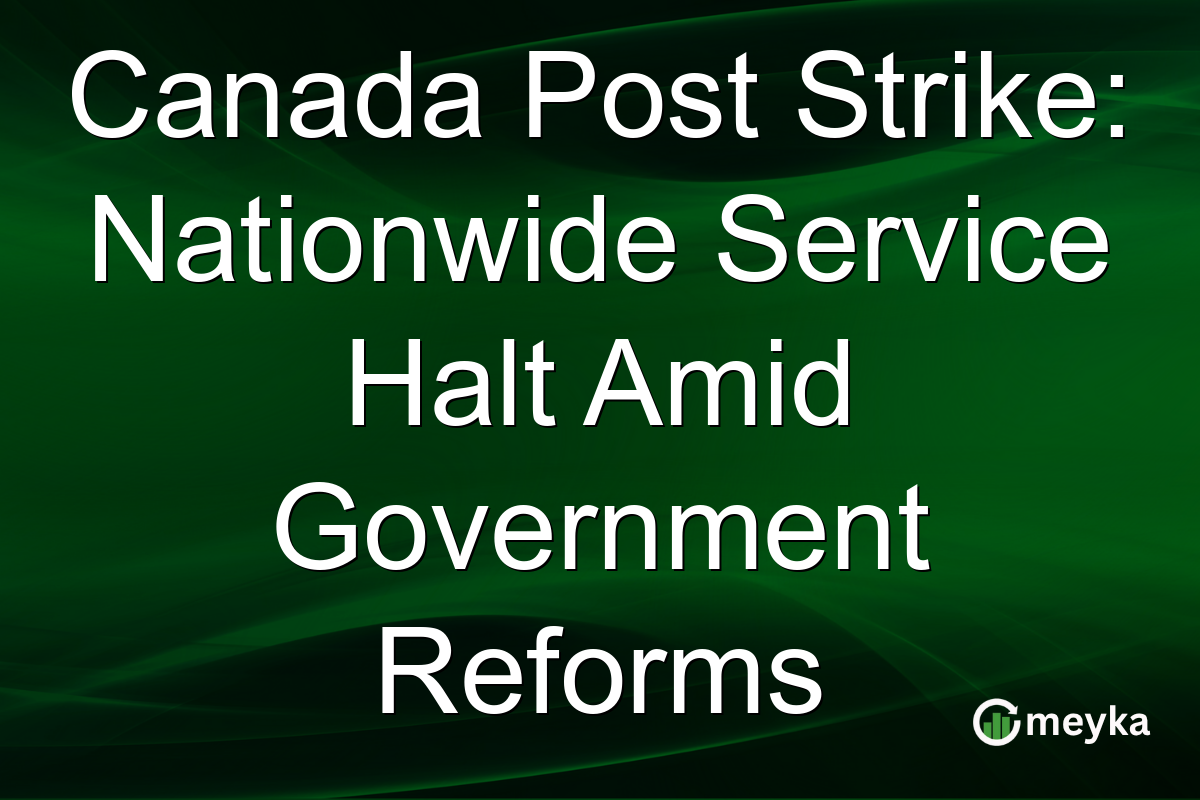Canada Post Strike: Nationwide Service Halt Amid Government Reforms
On September 25, 2025, Canadians faced widespread disruption as the Canadian Union of Postal Workers (CUPW) initiated a nationwide strike. This decisive action came as a response to government plans to phase out door-to-door delivery, a move that has stirred significant controversy. The strike has effectively halted mail and parcel services across the country, raising concerns over the impact on businesses and individuals reliant on these services. With the postal service disruption leaving millions without essential mail deliveries, the situation presents a critical challenge for the country’s communication infrastructure.
The Reasons Behind the Canada Post Strike
At the heart of the Canada Post strike is a government proposal aimed at transforming the national postal service. The plan involves discontinuing door-to-door mail delivery in favor of community mailboxes, a cost-saving measure projected to save millions annually. However, for many, especially seniors and those with mobility issues, this change poses accessibility concerns.
This conflict reflects deeper tensions between cost-saving initiatives and public service obligations. The CUPW argues that the move undermines the service quality Canadians deserve. With the strike now in effect, the union aims to pressure the government to reconsider its stance amid rising public concern.
Impact on Businesses and Daily Life
The postal service disruption impacts various sectors, from e-commerce to healthcare. Small businesses, particularly those dependent on mail services for product deliveries, face significant challenges. This could affect customer satisfaction and business growth.
Individuals, especially those in remote areas, also feel the pinch. With no alternative services in place, reliance on the postal system for essentials like medication deliveries becomes a critical issue.
For retailers and logistics companies, this strike emphasizes the need for diversifying delivery channels to mitigate similar risks in the future. This shows businesses must adapt to maintain resilience in the face of such disruptions.
Looking Ahead: Government and Union Dynamics
As the strike unfolds, both the government and CUPW remain locked in negotiations. The government maintains that the reforms are necessary for sustainability in a changing postal landscape. Meanwhile, the union insists on protecting jobs and maintaining service access for all Canadians.
If talks remain stalled, the prolonged service halt will likely pressure both sides to reach a compromise. The government may need to bolster public support by demonstrating the long-term benefits of their planned reforms. Conversely, the union seeks to secure assurances that address the concerns of its members and the public.
Final Thoughts
The Canada Post strike is more than a simple labor dispute; it underscores challenges at the intersection of fiscal responsibility and public service. As both sides negotiate, the priority should be a solution that ensures sustainability without sacrificing accessibility. Businesses and consumers alike await a resolution, hoping for a balance that maintains service quality while addressing financial imperatives.
Investors and stakeholders should keep an eye on developments within the postal sector, as the outcome could influence governmental approaches to public service transformations nationwide. Platforms like Meyka can provide real-time insights and predictive analytics to help individuals and businesses navigate these dynamic changes. Ultimately, the strike’s resolution will be vital in shaping the future of mail services in Canada.
FAQs
The Canadian Union of Postal Workers called a nationwide strike in response to government plans to phase out door-to-door mail delivery. The union views this change as a threat to job security and public access to essential services.
Businesses reliant on mail and parcel services face disruption, affecting deliveries, customer relations, and potentially revenue. This highlights the necessity for firms to diversify their logistics and delivery strategies to mitigate similar risks.
The government aims to replace door-to-door delivery with community mailboxes as a cost-saving measure, anticipated to save millions annually. However, the plan faces opposition due to accessibility concerns, especially for seniors and people with mobility issues.
Individuals should explore alternate delivery options, such as relying on digital communication for bills and essential documents and using courier services for urgent parcels. Staying informed about the strike’s status will help manage expectations and plan accordingly.
Disclaimer:
This is for information only, not financial advice. Always do your research.






